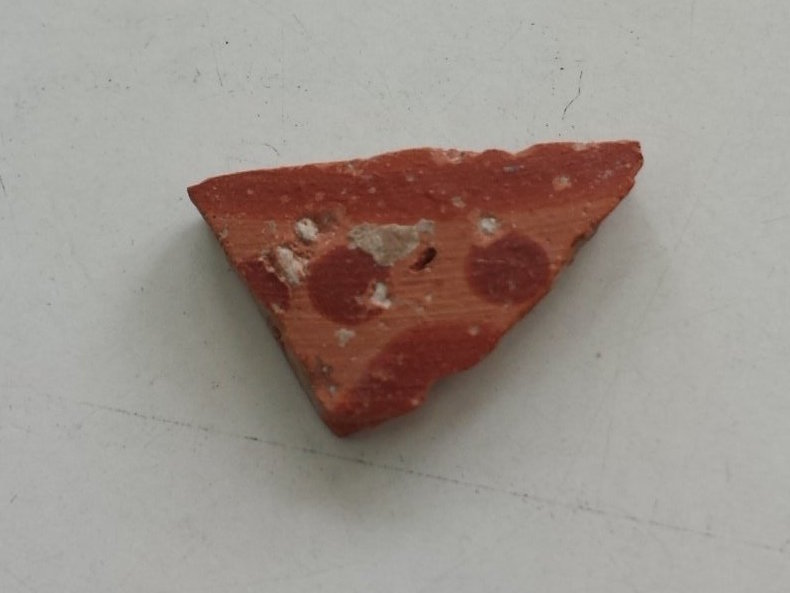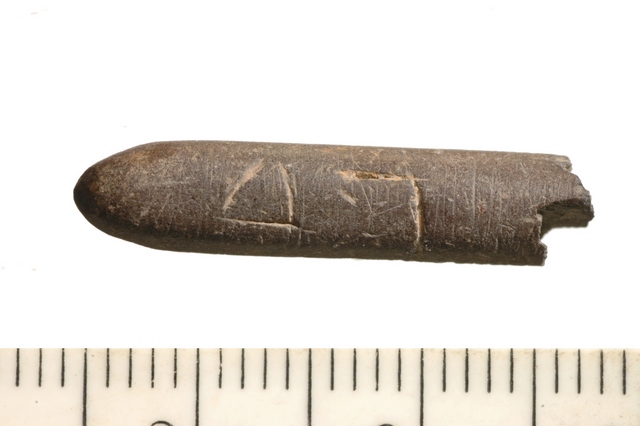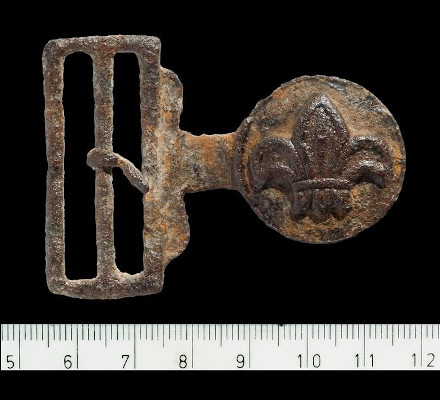Our (Virtual) Cabinet of Curiosities
Hi everyone,
We are hard at work in the lab continuing our research on the thousands of artifacts we’ve recovered from the Temple Mount. We’ve accomplished a lot in the last few months and we have catalogued most of our pottery and started working on drafts of the various chapters we hope to publish.

Imported Mycenaean pottery
With so much going on and so many new discoveries every day, “Oh look! We have a gorgeous piece of imported Mycenaean pottery” and so forth, it’s always interesting when we find something in the storeroom that no one is able to identify. We have an amazing team of researchers who specialize in all different kinds of materials and all different time periods, so it takes a lot to stump us, but it does happen. To help us with our research on these “stumpers,” we created a website and a forum for people to see our unidentified finds and help us out.
Do you collect teacups? Are you an expert in Japanese imports from the last 200 years? Well this might be the day you can really help us out.
- Unidentified modern vessel with manufacturer’s mark visible.
- Unidentified belt buckle with a Fleur de Lis
Do you hail from the great city of New Orleans or have a secret (or not so secret) collection of Fleur de Lis belt buckles? If you do, can you tell us when this style became popular, where these might have been sold, or have an idea about how this ended up on the Temple Mount? We think it might be Crusader.

Example of gadi material
It’s amazing, but you really can help. Our intern last year, Hannah, decided to tackle what we were calling “gadi material,” since one of the examples had two incised symbols that resembled the ancient Hebrew letters ג and ד. We’d found a number of small fragments and had no idea what to make of them. We had some great suggestions on our website: “The object is probably an internal skeleton of a cephalopod like a squid known as a belemnite. It received mystical powers and was used as amulets for luck and success. A specimen found in Tiberas (751 AD) with the inscription of an Arabic name was analyzed by me (in press) based on the origin of this belemnite species form northwestern Europe. The present object is corroded and needs to be observed from all sides for possible identification and additional inscriptions. -Z. Lewy.” Based on the picture, this was a really insightful comment, but in the end, after we tested the material, Hannah found that it was not organic, but slate. These were fragments of “pencils” used for writing on slate writing boards and can be dated to the last couple hundred years. More on this in future posts ;) .
See? Students! If you need a project, let us know!
I just uploaded a few more unidentified finds to our growing database. Definitely take a minute to check it out HERE and see if you can help us identify those artifacts that have us scratching our heads. Or, see if there is a project you want to tackle using our material. Either way, it’s a cool website to learn about the strange things found on the Temple Mount.
- Unidentified modern vessel with manufacturer’s mark visible.
- Unidentified belt buckle with a Fleur de Lis
Like what you see? Support research like this at www.half-shekel.org!
Discover more from The Temple Mount Sifting Project
Subscribe to get the latest posts sent to your email.


















https://tmsifting.org/uifinds/?to=viewfind&find_id=46410 – circle, in title?